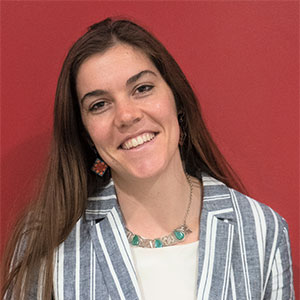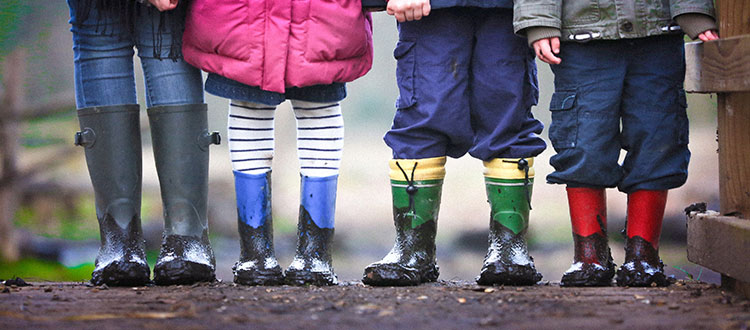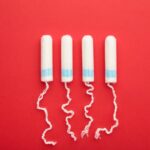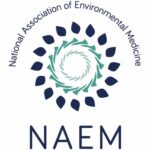Green certifiers can do a better job at protecting kids from toxic PFAS in everyday products
 |
| Summer-Solstice Thomas Silent Spring Institute |
New study by Silent Spring Institute found PFAS in water- or stain-resistant clothing, bedding, and furniture, including products marketed as “green.”
While green certified products do restrict many harmful chemicals, the results highlight the need for green certifiers to do more to protect people from toxics, as well as the need for stricter government regulations to keep manufacturers from putting these toxic chemicals products in the first place, especially where they are not needed. Our study, and amplifying work by advocates, is helping change green certifications and PFAS regulations.
PFAS, or per- and polyfluoroalkyl substances, are a class of over 12,000 chemicals that companies add to a wide range of everyday products to make them nonstick, waterproof, and stain-resistant. They are found in carpets and upholstery, bedding, waterproof apparel, non-stick cookware, grease-proof food packaging, and even dental floss. They are also used in firefighting foams for putting out fuel fires.
In fact, PFAS are among the most ubiquitous synthetic chemicals in the world. Research has shown that almost every American has PFAS in their blood, and the chemicals can stay in our bodies for years. PFAS also associated with a wide range of health effects, including cancer, thyroid dysfunction, low birth weight, decreased fertility, elevated cholesterol, and altered mammary gland development. Studies have found links between PFAS exposure and immunosuppression, including decreased antibody response following vaccination.
In lab-based studies, PFAS have been found to impair mammary gland development, which may lead to difficulty with breastfeeding and increased susceptibility to breast cancer later in life. Children’s exposure to PFAS is especially concerning as their developing bodies are more vulnerable to the harmful effects of chemicals.
Silent Spring’s latest findings suggests textiles could be an important source of exposure to these compounds. PFAS can migrate out of products into the air and into household dust. Ingestion or inhalation of dust is a common way for people to be exposed to product chemicals. When washed, textiles treated with PFAS can also release the chemicals into laundry water, which are then released into the environment through household septic systems.
Given the myriad sources of exposure and potential health effects, it makes sense that people want to know how to avoid products with PFAS. Green certifiers have emerged as a way to help people do that—putting their seal on products that have been tested to ensure harmful chemicals are not present at levels above a certain threshold.
Demand for “green” products is surging, resulting in a large increase of green certifications on everyday goods. The growing use of these certifications certainly has large potential to change the market and what chemicals are commonly added to our everyday products. But, Silent Spring’s most recent study shows that this potential is not being effectively used by certifiers, or the manufacturers who rely on them, to reduce the use of PFAS in our products. For instance, the study found high levels of PFAS, specifically PFAA precursors, in five out of seven green certified products screened with a total oxidizable precursor (TOP) assay.
Thankfully, some certifiers are listening. After Safer States, National Resources Defense Council (NRDC), Toxic-Free Future, and others sent a letter—citing Silent Spring’s study—to a number of green-certifiers, ZDHC and Bluesign announced a commitment to more holistic consideration and monitoring of a wider range of PFAS chemicals in their certifications testing.
We hope other certifiers—and retailers—will follow suit. Green certifications should prohibit intentionally added PFAS and should establish thresholds for unintentionally added PFAS that address the entire class of PFAS. Total fluorine in green certified products should be limited to the lowest level that is technically achievable through validated methodologies.
We also hope that more government regulators step up to the plate. California took the much needed step to ban PFAS from children’s products in October. Recent sweeping PFAS bans passed in states like Colorado and Vermont show that there is public demand for more holistic consumer safety from these toxic chemicals. However, a more national movement is needed to transition away from PFAS entirely. Safer alternatives for waterproof gear are quickly expanding, and as are effective PFAS-free firefighting foams. The United States should follow the European Union’s footsteps and phase out all PFAS, unless their application is absolutely essential.
Given the wide range of harmful health effects associated with their exposure, PFAS shouldn’t be allowed in everyday products, particularly children’s products, in the first place. Restricting PFAS as a class in green certifications, lowering thresholds for total unintentionally added PFAS, and adopting stronger regulations is critical for making our products and environment safer for all of us—including our children.
Reference:
Rodgers, K.M., C.H. Swartz, J. Occhialini, P. Bassignani, M. McCurdy, L.A. Schaider. 2022. How well do product labels indicate the presence of PFAS in consumer items used by children and adolescents? Environmental Science & Technology. DOI: 10.1021/acs.est.1c05175
Additional Resources:
Table: List of brands tested for the presence PFAS





